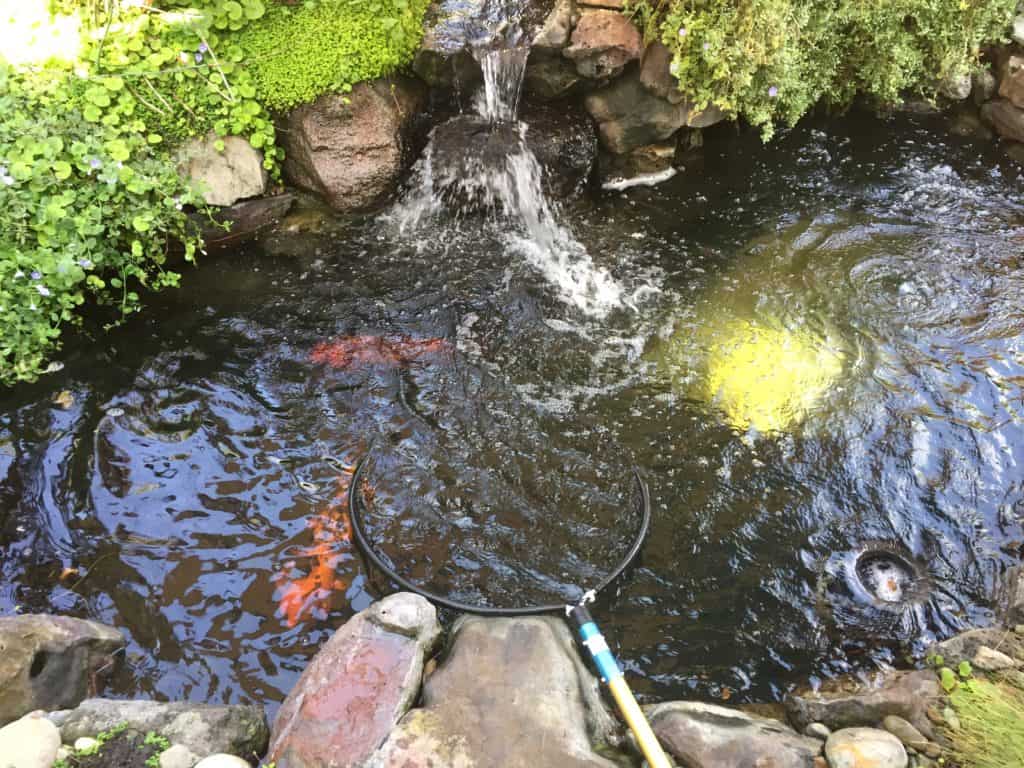** This page contains affiliate links where we get a small percentage of your purchase for our recommendations. **
When is using salt in fish tanks and ponds beneficial and how does it affect your fish? Salt is a normal component of many fish systems. Saltwater and brackish systems require salt on a continual basis. But what about using salt in freshwater tanks? Some internet pages recommend an occasional salt treatment or a low salinity in koi/goldfish ponds/tanks at all times. Others say don’t bother.

In a freshwater environment, a fish’s body is more dense than the surrounding water. As a result, water is constantly trying to enter the fish’s body and achieve osmotic homeostasis. A fish’s gills, kidneys and urinary systems are responsible for removing the excess water. When these mechanisms are compromised, the clinical manifestation of “dropsy” can occur. By adding salt to the water, you are changing the osmolality of the environment surrounding the fish, thereby decreasing the amount of water diffusing into the fish. Some people figure this is less stressful for a fish, but after millions of years of evolution, it really isn’t necessary. A fish’s body can handle the metabolic demands of freshwater. It’s the human equivalent to drinking less water so your kidneys don’t have to work as hard.
Most salt-avid fish keepers will keep their fish in very low salinities: 1-1.5%. This level can be very hard to test accurately for and will often vary between 0-3%. This level will not hurt your fish. If you feel like you NEED to have salt in there, that’s fine, but you should not strive for levels greater than 2%. You do NOT HAVE to add salt to your freshwater fish system. Always add non-iodonized salt (not table salt)! Aquarium or pond salt is the safest choice for fish systems.
And make sure it is SODIUM chloride “salt.” POTASSIUM chloride is toxic to fish and will kill them. Do not use marine or coral salts in freshwater fish systems. They have other additives that will likely only make your algae worse.
Most of the salt products available on pet store shelves recommend a dosage by volume. This is very silly for salt that comes in various sizes. It is critical that you ALWAYS weigh your salt. This is the only way to make sure you are getting to the correct salinity.
How to I test my salt levels?
The best method of testing your salt levels is with an electronic probe. (This is the one our service uses.) Keep in mind that you may have to calibrate it frequently in distilled water to keep it honest. Knowing your salt level after you add a certain measure of salt can also help you determine how many gallons your pond actually is! Look here for the conversion.
What about using salt in fish tanks for parasite infestations?
For some parasites, depending on the species and water temperature, higher therapeutic levels of salt can be used to treat the infestation. Salt works by first increasing, then depleting the mucus coat, which many parasites use as a food source and for protection. Once the mucus coat is gone, the single-celled parasites rupture from the changing osmotic gradient. But if you are slowly bringing your salt levels up without realizing it, some parasites have been found to become resistant to therapeutic salt levels, requiring treatment at even higher doses. The higher the salt dose, the harsher the treatment for the fish.
All in all, a little salt in fish tanks is fine, but don’t obsess over it. Your fish will do just fine without it. The only time we recommend salt is for recovery from trauma or surgery. Don’t forget that salt can kill aquatic plants!
What about Epsom salt?
Epsom salt is technically magnesium sulfate (magnesium + sulfur + oxygen). It does not share the beneficial properties of sodium chloride and should not be used as a substitute. It does not hurt fish, but it isn’t good for them at high or long doses.
Other Articles You Might Like
- 10 Questions to Ask Yourself Before Getting a Saltwater Tank
- Preventing Disease in Fish Tanks and Ponds
- How to Treat Disease in Fish


I just have a 40 gallon tank with 2 large Koi and 2 catfish (one a Pleco.) I didn’t know if I should add salt.
Your tank is much too small for koi. Plecos can tolerate low levels of salt, but not as much as koi.